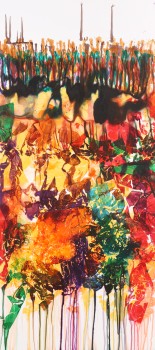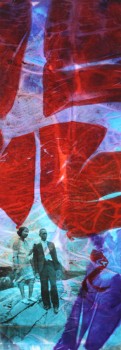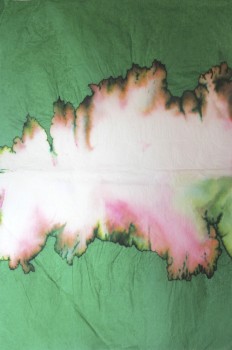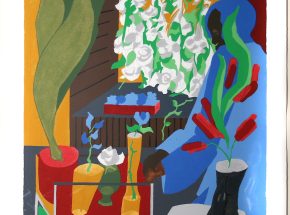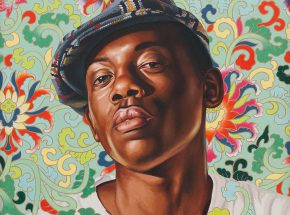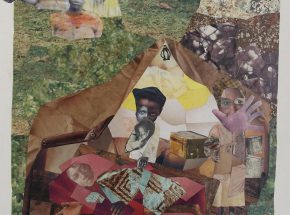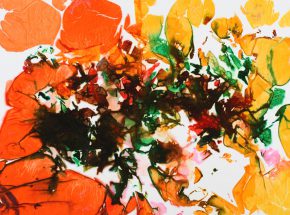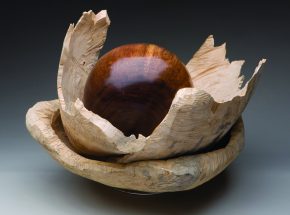
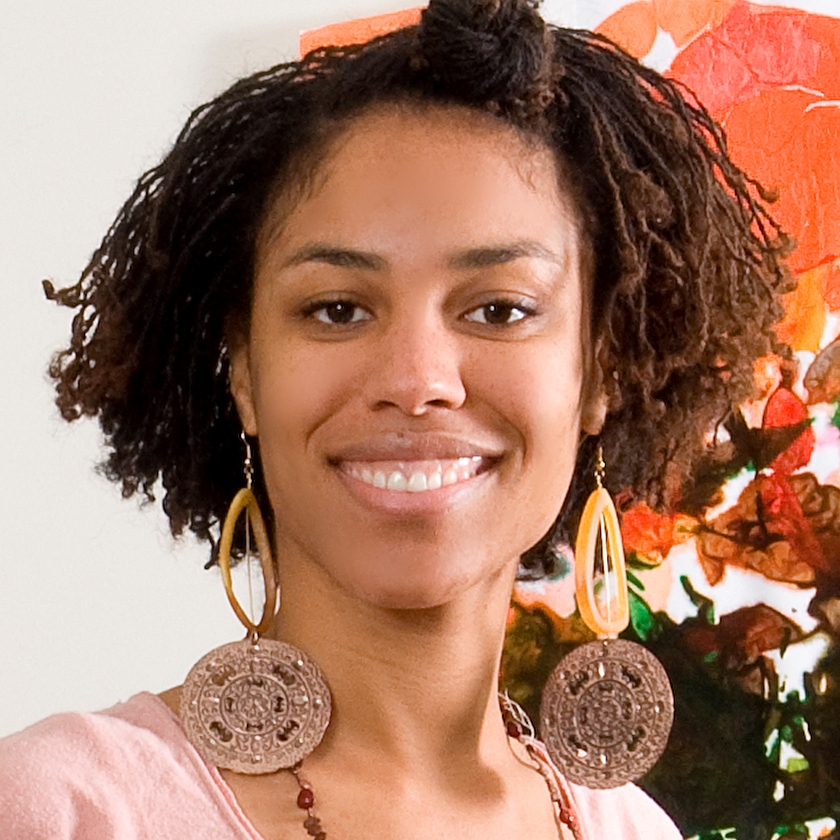
In 2005 I discovered a stack of brightly colored tissue paper tucked away in my grandmother’s basement. After unfolding the tissue, I noticed that water leaked onto the paper and left an intricate stain. This event inspired a shift in my creative process. A few weeks after I started working with tissue paper, Hurricane Katrina began bearing down on the Gulf Coast and I witnessed “water moving color” literally, the power of nature, and the neglect of a nation. The sheer magnitude of the destruction and the remaining marks of flooding struck a direct connection to my artwork.
Over the past five years I have worked with “bleeding” tissue paper, witnessing its deterioration. In and out of water, ripped and pieced back together, thrown, stepped on, forgotten and remembered. The union of the tissue fragments is rooted in my familial quilt-making heritage and the tradition of preservation and resourcefulness. Each piece speaks to me as a memory of existence and resilience. Independently, a torn piece of paper seems like a scrap of trash, but once unified with others, the force is overwhelming. Reflecting on the beauty and diversity of the African diaspora, my Tissue Paper Sculptures scale the wall and demand attention. Fragments of familiar faces stare down from above and beam with strength and solidarity.
Tissue Ink Monoprints are created by saturating the tissue paper with water, thus releasing the ink from the fiber; the tissue is then pressed on to a heavy weight paper, which absorbs the bright ink permanently. Much like a discarded cocoon from an emerging butterfly, the Tissue Paper Sculptures give birth to the Tissue Ink Monoprints. This sacrifice is honored as the ephemeral paper hangs freely on the wall with power and dignity. The Tissue Ink Monoprints represent a recorded history of formation, which pays homage to the stains it now bears.
As an artivist, I contemplate global issues of war, poverty, waste, ageing and beauty, searching for what fuels our desire to preserve or protect. Giving reverence to my ancestors and meditating on the beauty of now, my art represents the freedom to create challenging work with an objective of universal peace and understanding. The peace starts with the community in which I’m sharing my work; interaction is ever present and essential.
Website
http://www.freelonasante.com
